This document discusses the generalization of the ratio-of-uniform method for random number generation, explaining its application to various distributions and outlining the challenges in constructing efficient random number generators based on this principle. It details the conditions under which this method is effective, including the determination of specific set boundaries and the implications for simulation efficiency. Additionally, the document introduces a new family of transforms that extend this methodology to handle unbounded densities and maintain box compactness for accept-reject sampling.
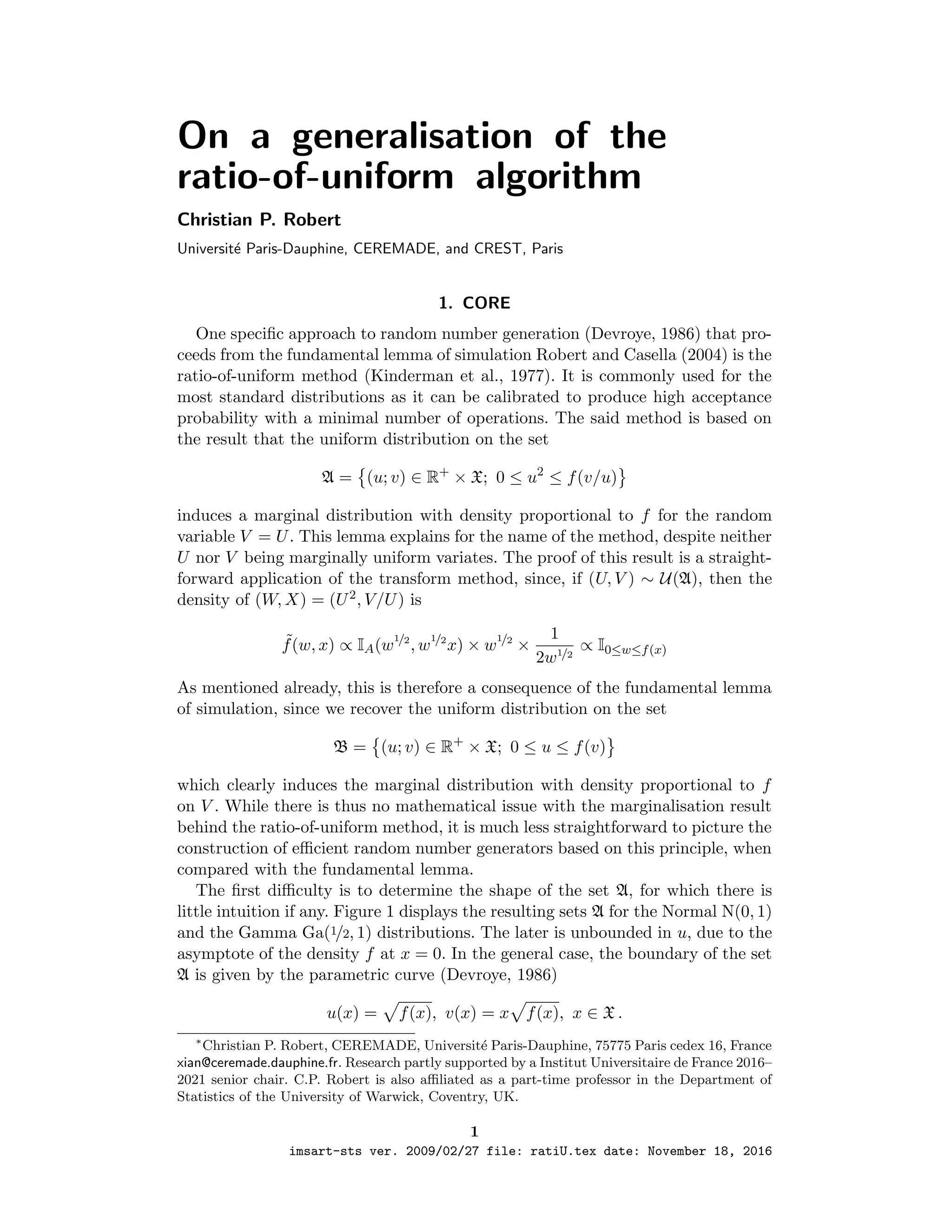
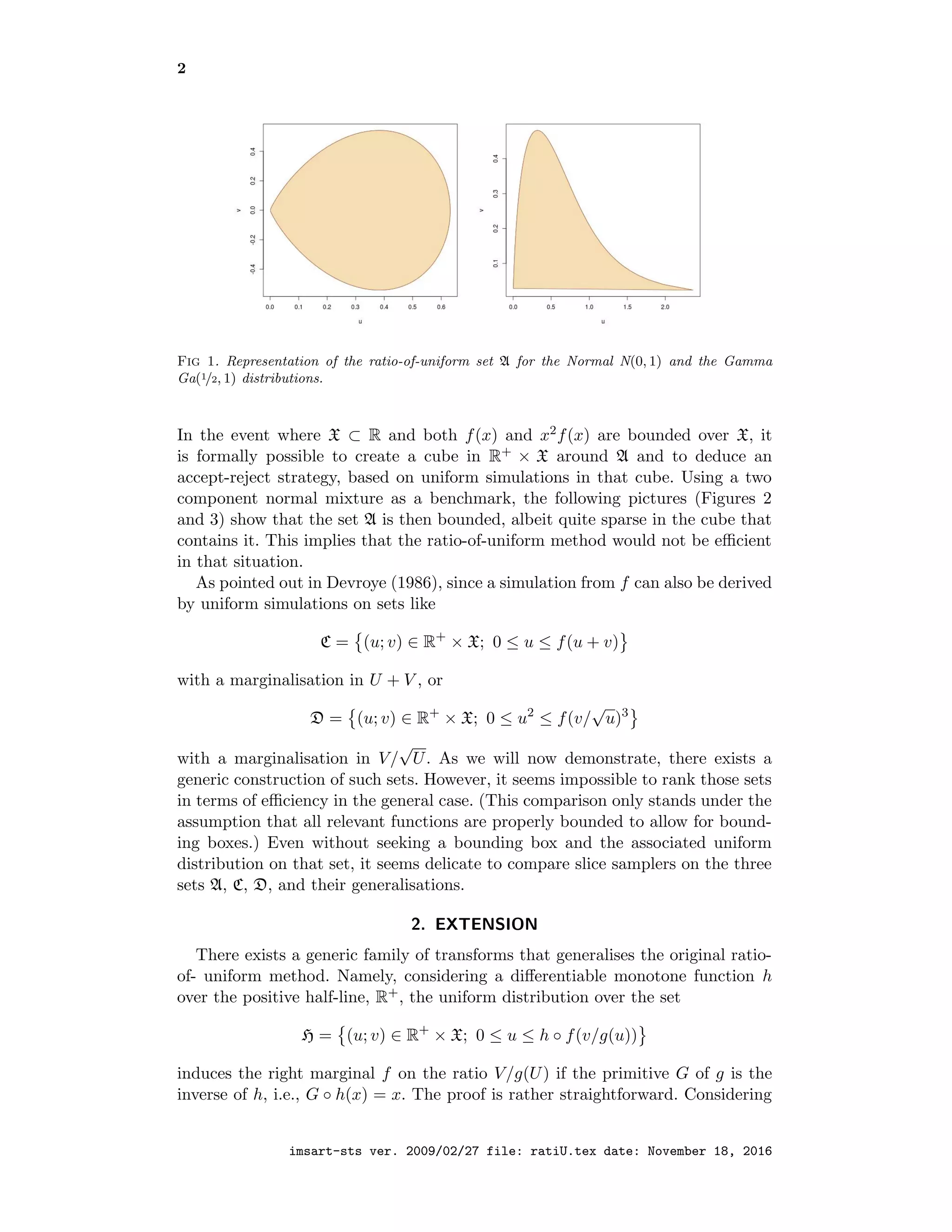
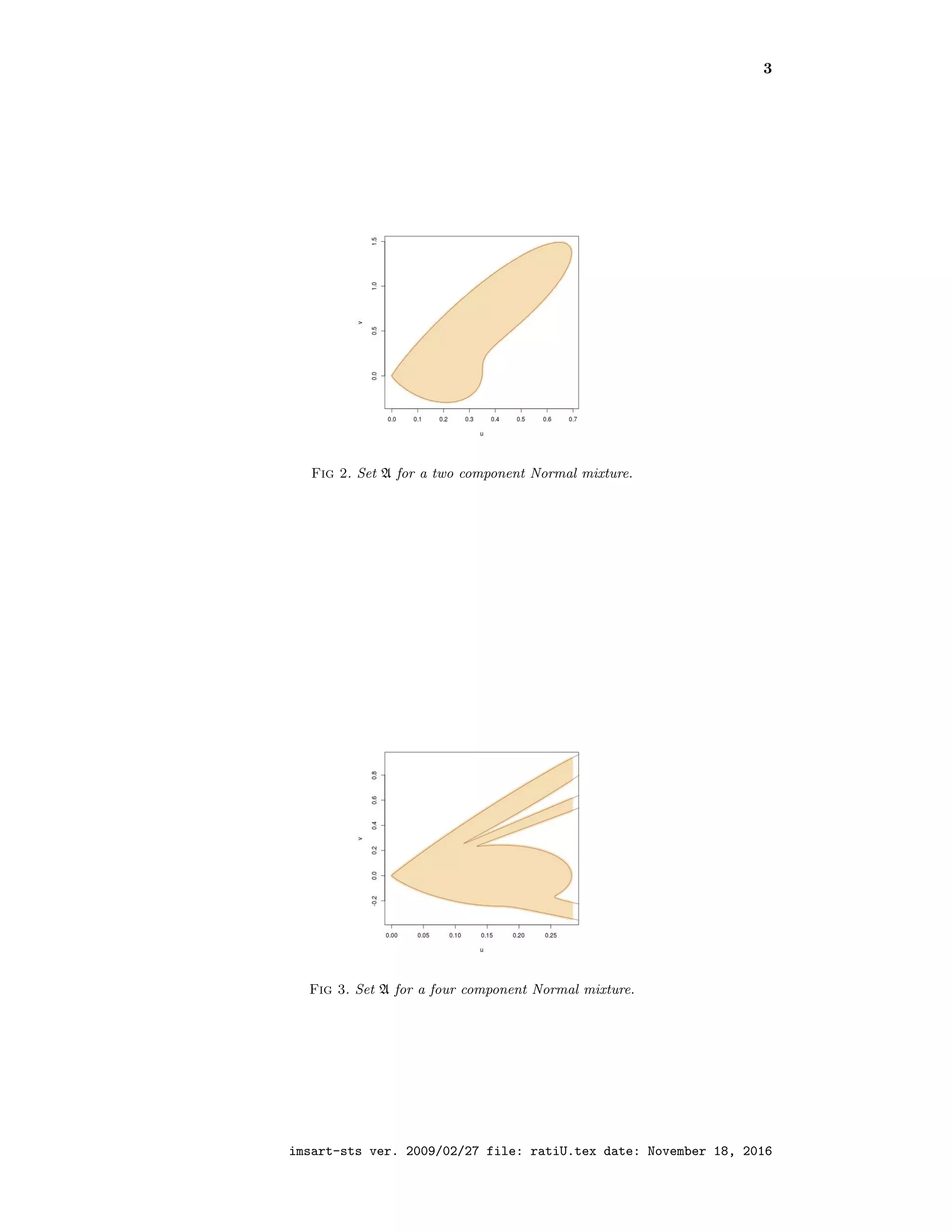
![4
the change of variable from (u, v) to (u, x) = (u, v/g(u)) produces a Jacobian of
g(u) and a joint density
U, X ∼ I0≤u≤h◦f(x)(u, x) g(u)
which integrates into
X ∼
h◦f(x)
0
g(u) du = G ◦ h ◦ f(x) = f(x)
when G ◦ f = id. The corresponding boundary of H is then provided by the
parameterised curve
u(x) = h ◦ f(x), v(x) = x(g ◦ h ◦ f)(x), x ∈ X .
For instance, when h(x) = xa, a power transform, the boundary can be written
as
u(x) = f(x)a
, v(x) = xf(x)1−a
, x ∈ X .
Similarly, when h(x) = exp(x), the ratio-of-uniform set is defined as
H = (u; v) ∈ R+
× X; 1 ≤ u ≤ exp{f(vu)}
with the curve
u(x) = exp{f(x)}, v(x) = x exp{−f(x)}, x ∈ X .
Note the change of range for u in that case.
One appeal of this generalisation is the formal possibility to include unbounded
densities and still produce compact boxes, as this seems essential for accept-reject
simulation if not for slice sampling. One possible choice for h is the generalised
logistic transform
h(ω) =
ωa
1 + ωa
which ensures that the [ratio-of-almost-uniform] set H is bounded in u. Since the
transform g is the derivative of the inverse of h,
g(y) =
a−1y(1−a)/a
(1 − y)(1+a)/a
.
the parametrisation of the boundary of H is
u(x) =
f(x)a
(1 + f(x))a
, v(x) = a−1
xf(x)a−1
(1 + f(x))−2
[(1 + f(x)a
− f(x)a
]−1+a/a
which means H remains bounded if (a) a ≤ 1 [to ensure boundedness at infinity]
and (b) the limit of v(x) at zero [where the asymptote of f must stand] is bounded.
This is satisfied if
lim
x→0
xf(x)
a+1/a
< +∞ .
For instance, this constraint holds for Gamma distributions with shape parameter
larger than 1/2.
imsart-sts ver. 2009/02/27 file: ratiU.tex date: November 18, 2016](https://image.slidesharecdn.com/ratiu-170704154816/75/A-generalisation-of-the-ratio-of-uniform-algorithm-4-2048.jpg)
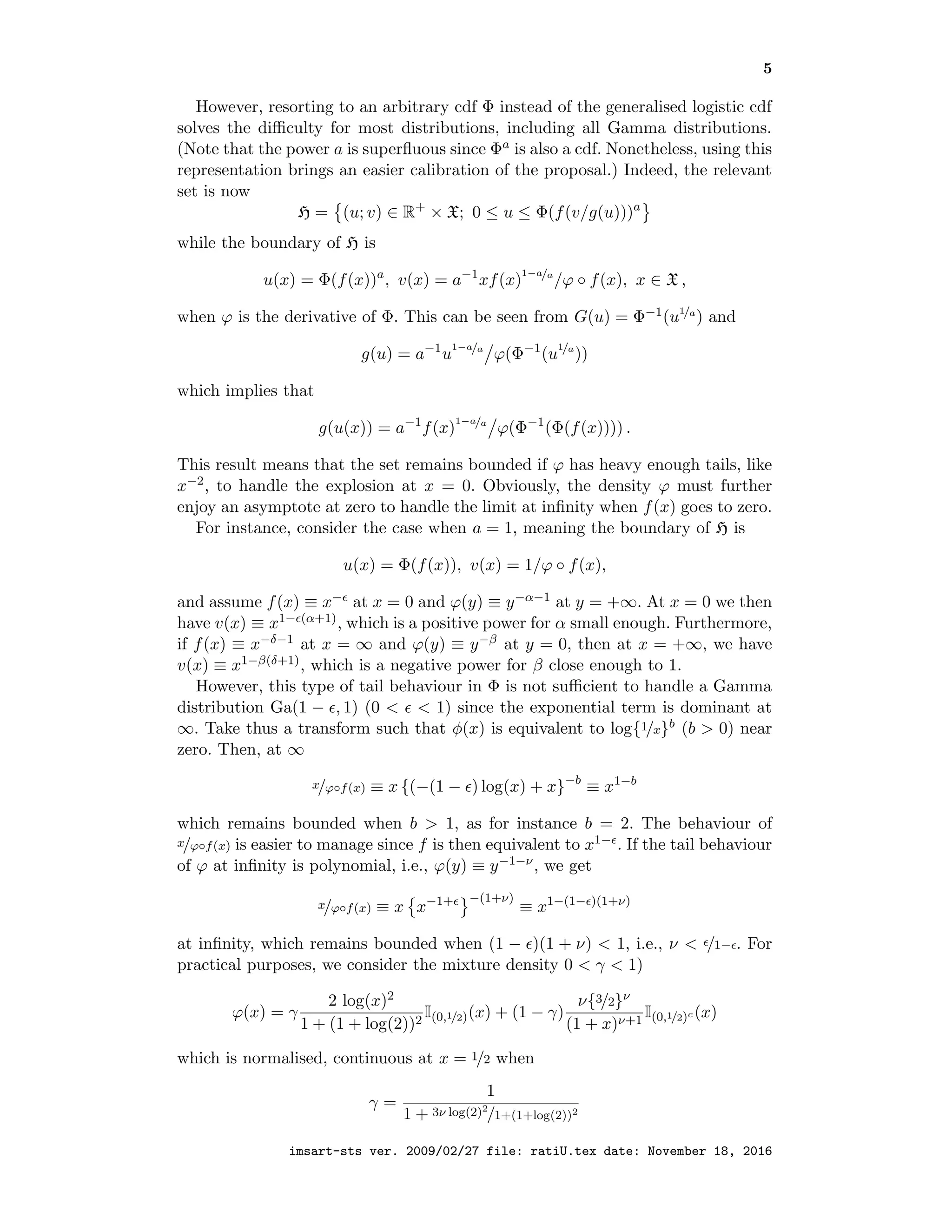
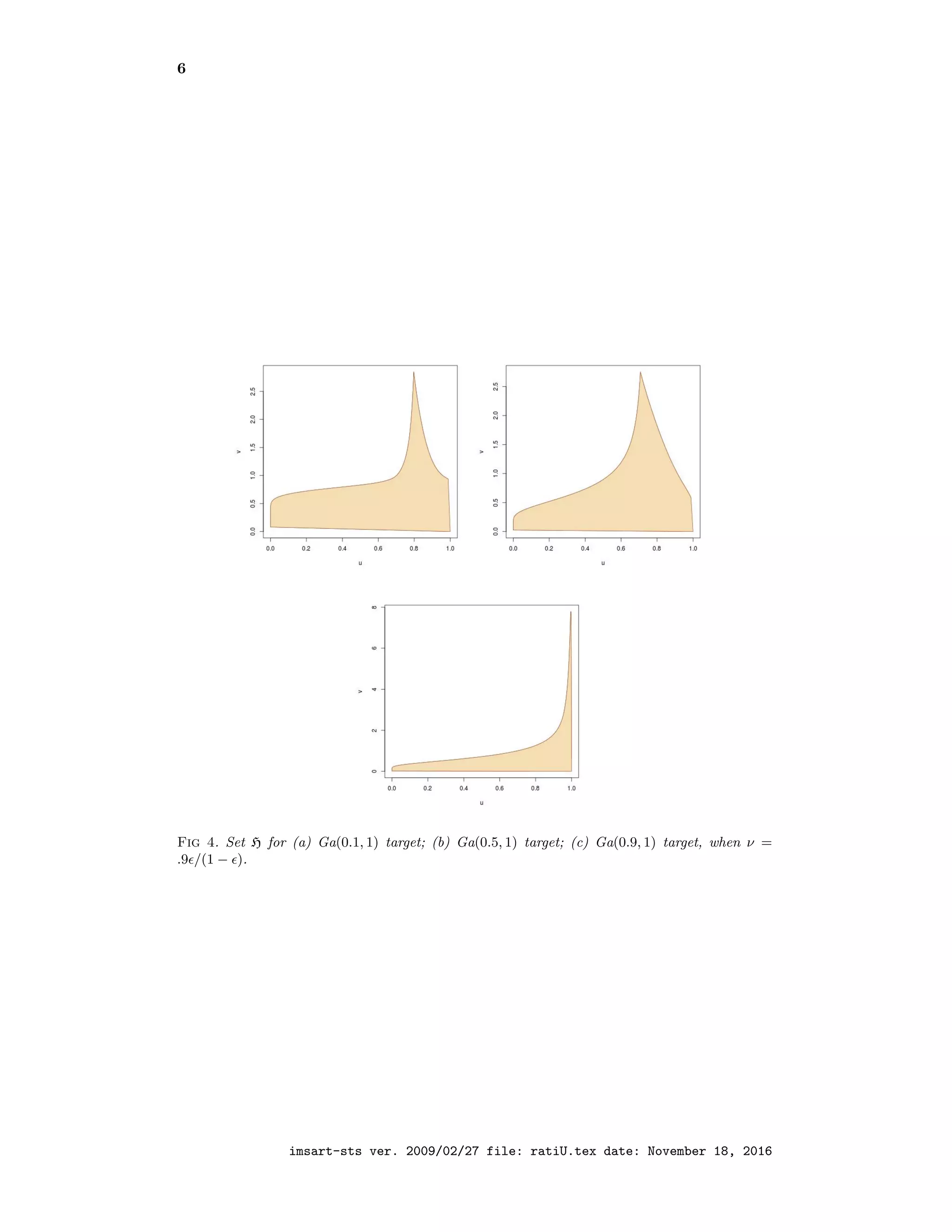
![7
and associated with the cdf
Φ(x) = γ
2x[(1 − log(x))2 + 1]
1 + (1 + log(2))2
I(0,1/2)(x)+ γ + (1 − γ) 1 −
(3/2)ν
(1 + x)ν
I(0,1/2)c (x)
Figure 4 produces three different bounded sets for Ga(α, 1) distributions based
on the above mixture transform Φ. Obviously, given the shape of those sets,
using a rectangular box does not lead to an efficient simulation algorithm. (This
goes without mentioning that a Ga(1 − , 1) distribution can be derived from a
Ga(2 − , 1) by multiplying a simulation from the former by U−1/1−
.)
REFERENCES
Devroye, L. (1986). Non-Uniform Random Variate Generation. Springer-Verlag, New York.
URL http://cgm.cs.mcgill.ca/~luc/rnbookindex.html.
Kinderman, A., Monahan, J. and Ramage, J. (1977). Computer methods for sampling from
Student’s t-distribution. Math. Comput., 31 1009–1018.
Robert, C. and Casella, G. (2004). Monte Carlo Statistical Methods. 2nd ed. Springer-Verlag,
New York.
imsart-sts ver. 2009/02/27 file: ratiU.tex date: November 18, 2016](https://image.slidesharecdn.com/ratiu-170704154816/75/A-generalisation-of-the-ratio-of-uniform-algorithm-7-2048.jpg)